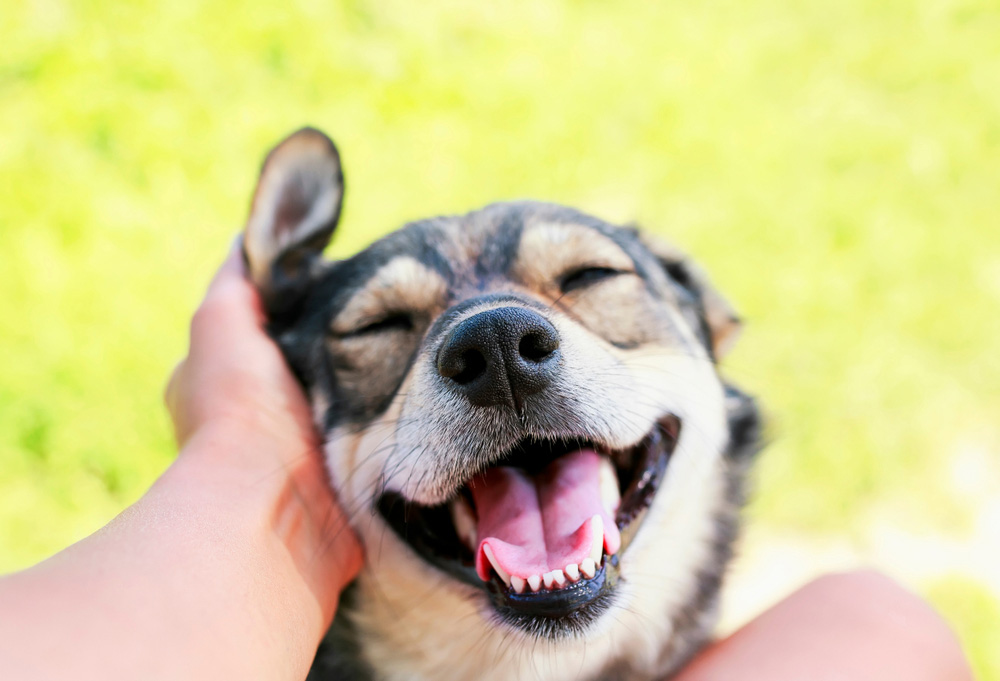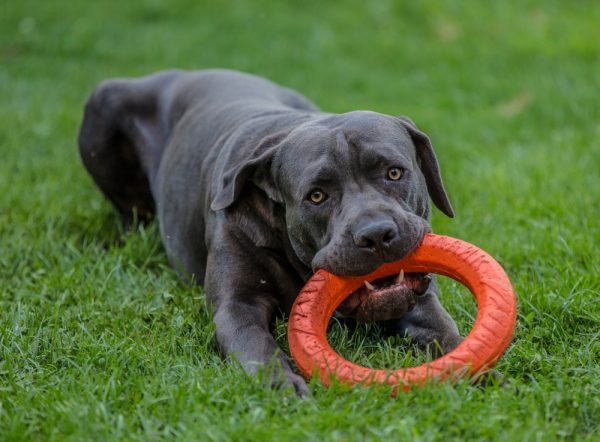If you have a dog, they’re going to be around strangers, at least occasionally. It can be dangerous or unpredictable if your dog isn’t familiar with strange faces and encounters them for the first time.
Some dogs have a very scared temperament that could result in aggression while others might run and duck for cover. Regardless of how a dog might shy away from strangers, we’re going to discuss how to reduce the tension and maybe even make your dog friendly towards strangers.

The 10 Ways to Make Your Dog Friendly to Strangers
1. Understand Their Breed Tendencies and Personal History
Some people make the mistake of falling in love with an adorable face, and failing to understand the breed in its entirety. Other times, you have a mixed breed and you aren’t quite sure exactly what makes up your dog—so, it’s a little more difficult unless you get a DNA test.
Regardless, if you know your breed, it’s best to thoroughly research about them as much as you can. Learning about the breed will let you see if issues like suspicion or wariness towards strangers are common in the breed.
If it is, you can work on early socialization to open them up in these circumstances. It all starts with your bond and relationship. Some dogs will still be unfriendly towards strangers regardless of breed. Sometimes it’s simply part of their personality or it could be because of past trauma or a bad experience.
They might be able to develop that trust with you but are unable to feel the same way towards other humans. Regardless of the reason for your dog’s reservation, there are workarounds. The situation might never be completely ideal, but it can be manageable.
If you are concerned about your dogs behavior, we suggest you speak with a vet.
If you need to speak with a vet but can't get to one, head over to PangoVet. It's our online service where you can talk to a vet online and get the advice you need for your pet — all at an affordable price!

2. Socialize Your Dog Early
If you want your dog to be good with strangers, they have to be familiar with new faces. Taking your dog on walks can expose them to a number of new people, but it doesn’t provide the same level of intimacy as a visit to your home, so to speak. Taking your dog on car rides, vacations, hikes, family barbecues, and anywhere else you can have pets is important.
Vet visits and groomer trips can also help your dog get used to being exposed to a variety of furry and human faces alike. Pair any calm response to a reinforcer. As they acclimate to these unfamiliar people and pets, they will start to understand and maybe even enjoy interaction.
Puppies love to play! If you start taking your puppy to a dog park, they’re quickly going to get used to all of the toys, smells, and exciting movement happening around them. It could really make them less fearful and more social.
On another note, you have to be very careful with dog park settings if your dog is iffy about strangers. One bad experience might change the pace of things. So, always be very cautious and aware of what’s going on in your surroundings during socialization.
3. Assert Dominance in the Connection
There is a very fine line during training where you need to be in charge of your dog but not completely overpower them. It isn’t about a power dynamic as much as it is about learning respect for the hierarchy.
Dogs naturally form bonds with each other like wolves do in the wild. If you are part of their pack, they will look for the leader. If they cannot find one, many will become one. It is important to show your dog that you are the head of the household.
This way, when you are introducing them to new situations or trying to command them to respond in a certain way, you need a dog that’s going to jump to attention if you demand. If your dog doesn’t listen to you, it can create a whirlwind of problems in social settings.
Your dog might feel they need to protect you, or they might feel threatened by another person or animal, causing excessive guarding behavior or even aggression.
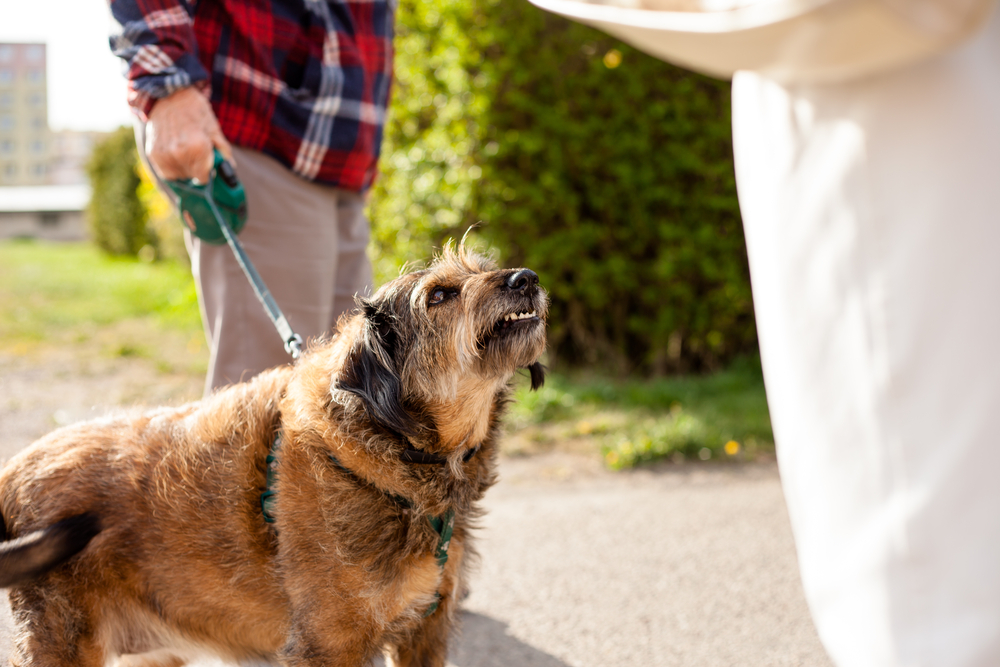
4. Remember, Treats Are Your Friend
The way to every dog’s heart is through their stomach. That’s a trait they share with man. If you are trying to get a specific behavior out of your dog or if you’re just trying to warm them up, food can be your friend.
You could even have the stranger in question offer a snack to the dog, thinking of it as a peace offering. Anytime you know you’re going to be around strangers or something that is unfamiliar to your dog, have treats ready.
Anytime the dog is even slightly aggressive or watchful of the stranger, you can call them in, set them down, and then reward them for a job well done.
5. Avoid Triggers for Previously Abused Dogs
Sometimes, if you adopt a dog, it can be very tricky or even impossible to get a full history on the animal. It is hard to tell what kind of abuse or neglect they encountered before meeting you. If you know that your dog is timid, reserved, shy, or feeling any particular way, abuse could very well be the reason.
Former abuse can be a very tricky and nearly impossible thing to navigate. Even if a dog is able to develop trust with another person in their lifetime, they might favor that person and be fearful of all others.
Owning a dog that has been abused is a real challenge for anyone, but it can also be very rewarding. You can do your best to rehabilitate this animal, letting them know it’s OK to participate in the world.
Some owners might opt for professional training to navigate the situation. Others might just let their dog be as they are without really trying to push the boundaries or encouraging socialization more than necessary. Once the damage is done, if there’s no coming back from it, you simply have to accommodate it and navigate around it.
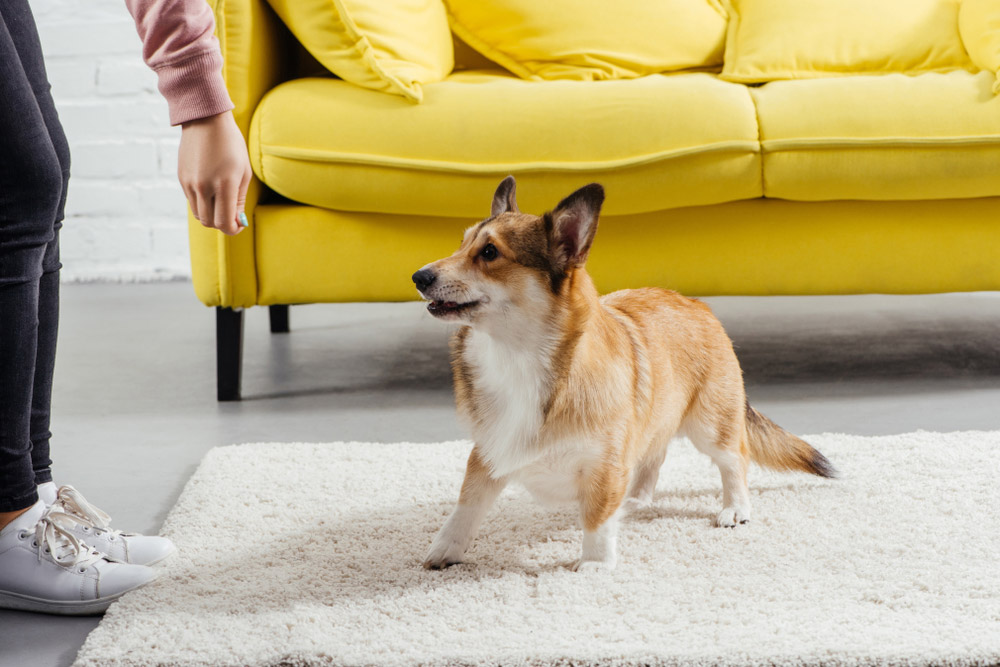
6. Introduce on Neutral Ground
Dogs have a natural protective instinct. Even dogs who mean no harm are likely to bark or alert when they hear a knock at the door. Because it is so instinctual to guard and protect the home, it is always a good idea to meet a stranger on neutral ground if possible.
If there’s any way you could go even just a few houses down on your street or across the road, it can break that feeling of the “this is mine to defend” mentality and help them focus on what is going on. They won’t have to worry about defending their territory and can relax.
If a person doesn’t often take their dog away from home, many of them are surprised at how much different their dog behaves.
For example, you might have a dog that sounds like it’s going to rip the neighbor’s dog apart if it could possibly get through the fence. Then, when the two dogs meet each other face to face, they give a couple sniffs and it’s time to play. So, meeting in public might be the key to your dog being tolerant of other people or pets being around.
7. Work on Professional Training
If you seem to have a little trouble socializing with your dog, there’s nothing wrong with opting for professional training. Many people use professional training services for their dogs all the time and canines are usually better for it.
Keep in mind that if your dog is aggressive to people and other pets because of previous abuse or mistreatment, sometimes professional training still won’t help. However, it’s definitely worth a shot if you are looking for a way to really help your dog.
Keep in mind that professional training can be pretty pricey, but don’t fret! There are tons of free resources online that can give you training tips. There are even online courses you can go through at your own pace with your dog to work on these problem issues.
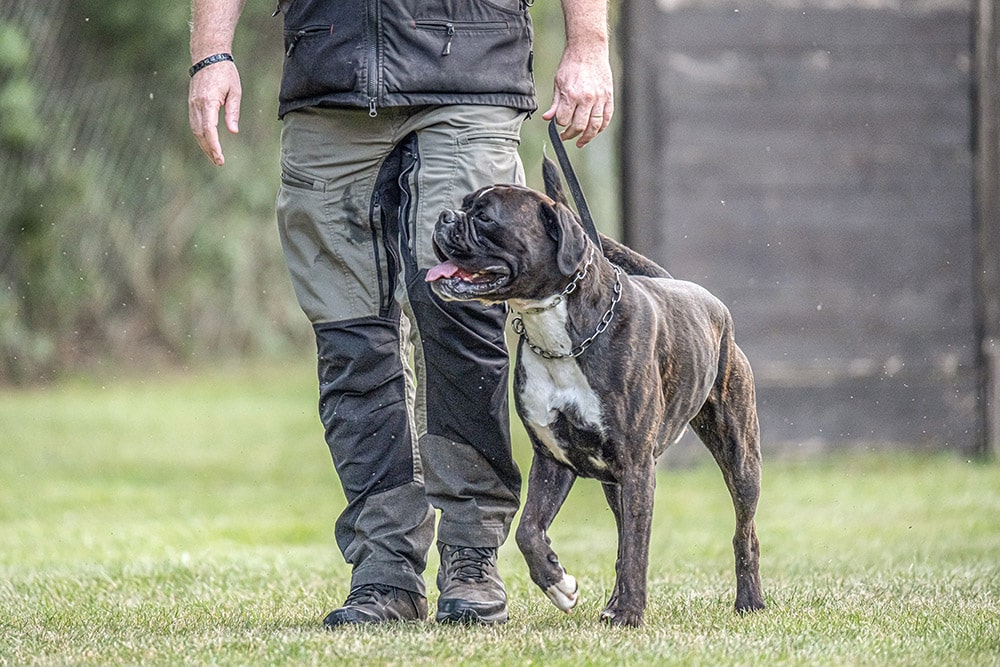
8. Teach Strangers How to Approach Your Dog
Your dog isn’t going to know how to react to strangers if they never see them. So it’s time to take them out into the world. If you are concerned, it is best to explain to strangers that they need to be mindful of boundaries around your dog.
There’s also nothing wrong with putting a gentle mesh muzzle on your dog to send a visual warning to strangers as well. If you encourage your dog to like strangers, another method could be to introduce them to a close friend or family member they haven’t met.
That way, you know the person very well, but they don’t. The two of you can communicate and work together to try to warm up that uncertainty part.
9. Pay Close Attention to Body Language
Body language speaks volumes, no sound needed. If it looks like your dog is getting amped up, nervous, timid, aggressive, or any other negative emotion, it’s time to shut it down. You can remove your animal from the situation or you can try to come out a different way.
Regardless, if you notice negative body language, it’s time to change the tempo. You can remove you and your dog from this situation and revisit a similar one in the future when your dog has calmed down.
Anytime a dog is ever aggressive or acting out of character, there are usually some visual signs beforehand to let us know. If you aren’t 100% familiar with your dog’s cues yet, it can be a little complicated to know exactly when enough is enough. Our recommendation is if your dog is uncomfortable, you never encourage contact between that dog and a stranger. Have the person keep distance until the dog approaches them.
If you misread body language or if the dog is very quick to react, an introduction could result in a bite if you aren’t careful. Advise the stranger to make no sudden movements or loud noises so your dog doesn’t get spooked in the process either. This can make a situation go from 0 to 100 if it isn’t well managed.
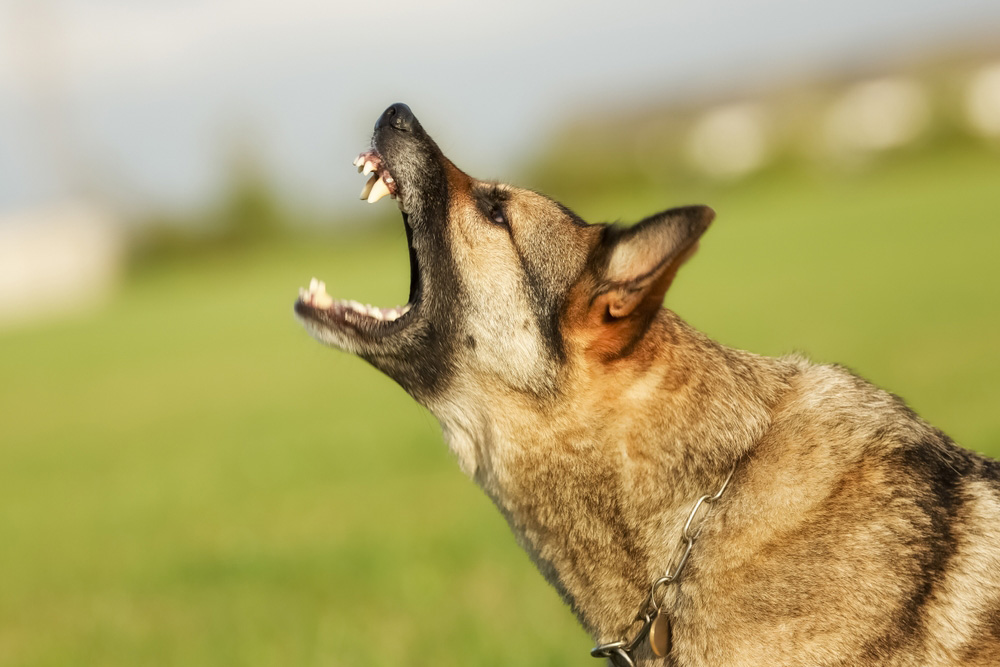
10. Remain Neutral and Calm
Don’t get worked up in any way. Try to remain as calm and neutral as possible. Dogs are extremely receptive to our emotions and when we shift, they can sense that. You can think of it as they are extremely in tune with body language.
So it is important that we remain completely neutral in this situation. If our anxiety starts to climb or we start to get very worried about the situation, we can send the wrong signals to our dog. They might mistake our anxiety about their reaction for being fearful of the stranger.
This can amplify their reservation or suspicion. Instead, stay very relaxed and don’t show any visual cues that you are uncomfortable. Try to remain assertive, happy, and encouraging. Don’t go over the top with loud noise or excitable voices. Keep yourself very midline for best results.

Conclusion
The bottom line is that strangers are scary! Even for humans, it can be very anxiety-inducing for us to meet new people or make new friends. However, we know that it can be equally rewarding. Dogs are highly sensitive, social creatures that thrive on interaction. Even the most standoffish dog could really use a friend if they are compatible enough.
Remember, every dog is a special case. There will be no one-size-fits-all method to making them friendly with strangers. Keep in mind that in extreme cases, they might never be friendly strangers at all. Be willing to work with or work around any obstacles in your way.
See Also:
- How to Teach a Dog to Be Gentle: 7 Tips & Tricks
- Do Hedgehogs & Dogs Get Along? Facts, Temperament & Behavior
Featured Image Credit: Bachkova Natalia, Shutterstock

